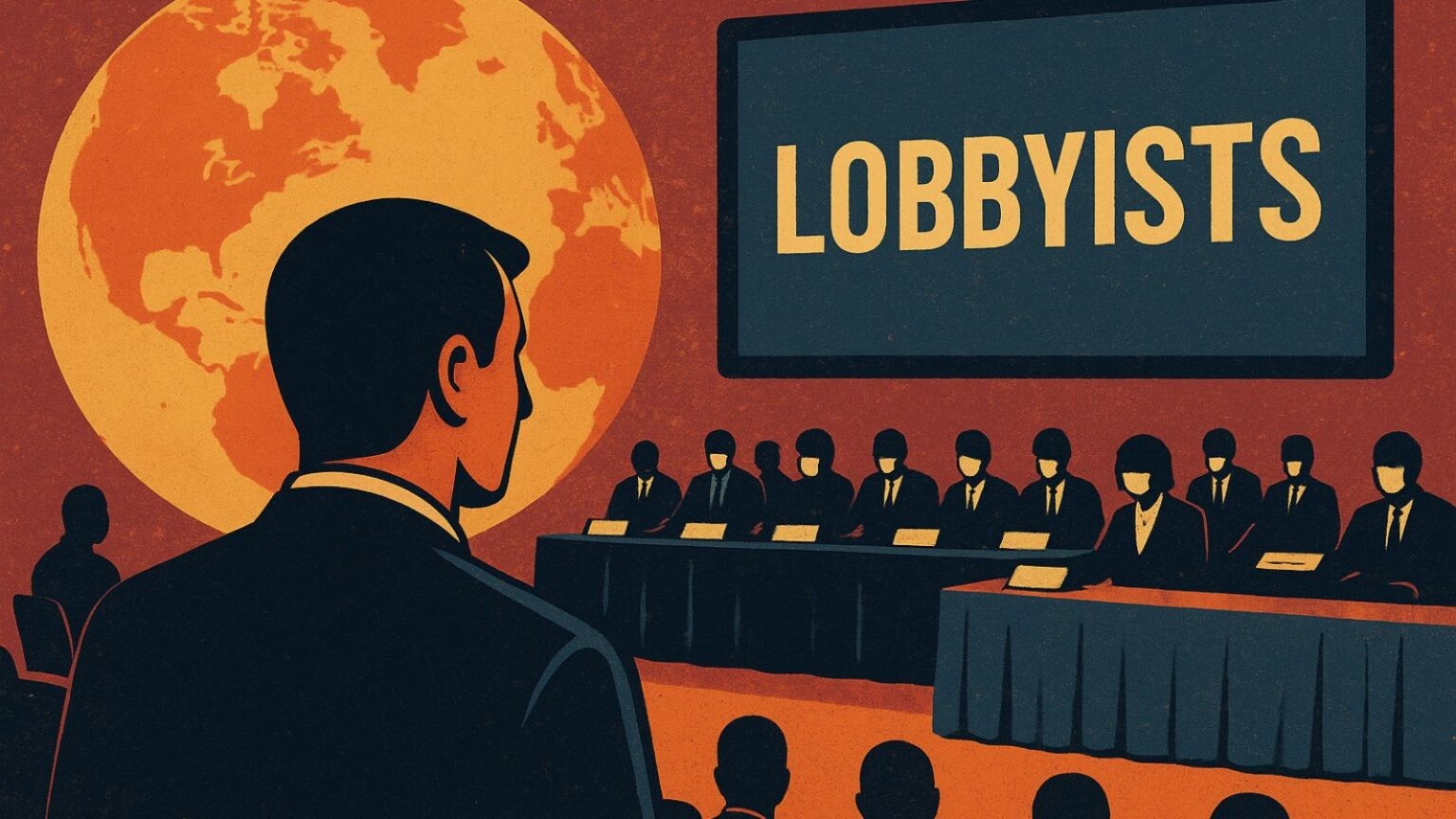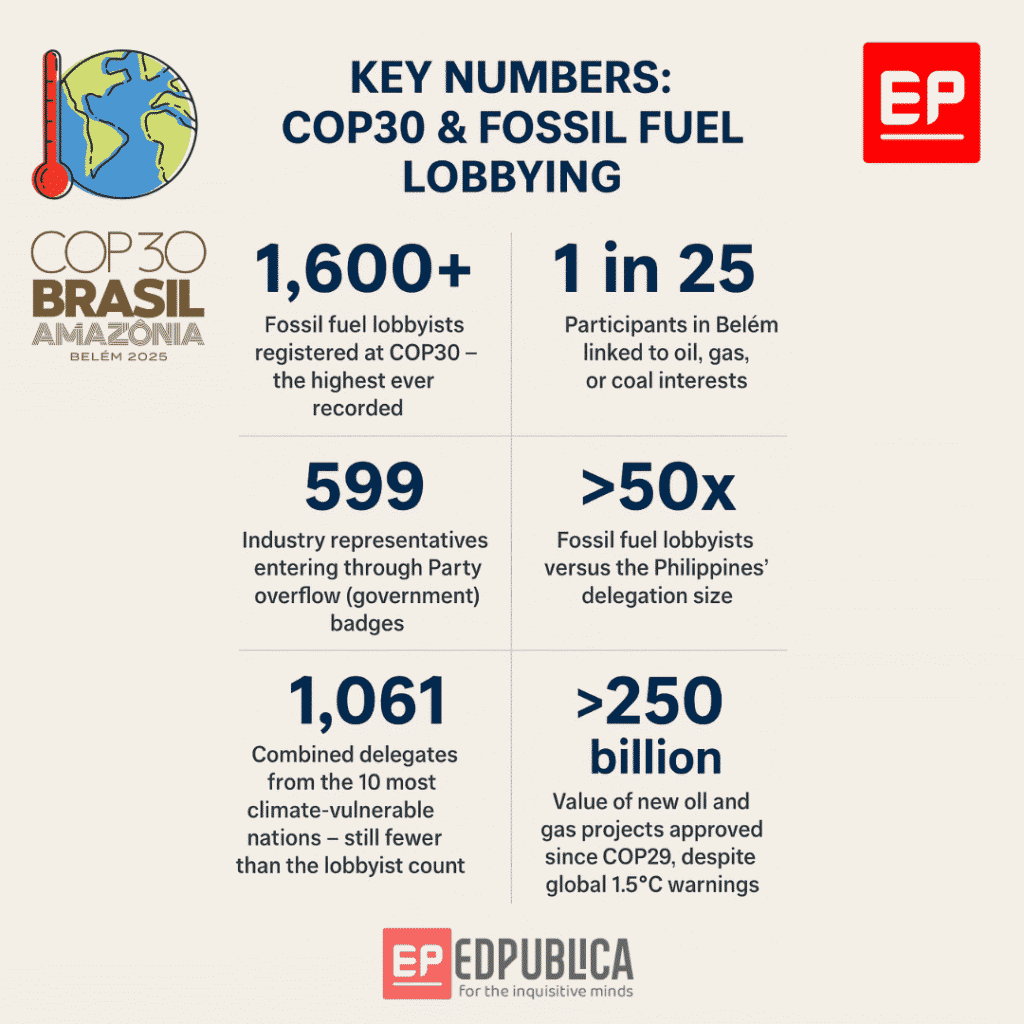Society
As Oppenheimer wins the Oscars, here is an epiphany
We can’t unmix science from politics. They’re intertwined.

Earlier today, Christopher Nolan’s much acclaimed film, Oppenheimer (2023), won 7 awards at the Oscars – including Best Picture, Actor, Supporting Actor, Score, Cinematography, Editing and Director.
And what better moment can there be to discuss threats and fears about the wildest creations of nuclear physics?
Oppenheimer made some seminal contributions in quantum mechanics and in black hole physics. He brought ‘quantum physics to the US’. However, Oppenheimer was also a public intellectual, who dabbled with left wing politics in his younger days. He rose to national prominence after he led Los Alamos National Laboratory as Director, in an effort that saw the US develop and wield nuclear weapons. He forever became known as the ‘father of the atom bomb’, a label that didn’t do anything to stop him spiraling into depression, as he saw his legacy tainted with death and destruction.
Nolan’s movie was a biopic, based on authors Martin Sherwin and Kai Bird’s Pulitzer Prize winning biography, American Prometheus: The Triumph and Tragedy of J. Robert Oppenheimer.
In a scene that shakes you to the core, Oppenheimer (played by Cilian Murphy) imagines seeing the horrific effects of a nuclear bombing on humans. A corpse flash fried, that crumbles upon the lightest touch. People mourning deaths of their loved ones, people vaporized leaving no traces behind. Others left alive with burns, and others vomiting irrecoverably from radiation sickness. Just imagine this is a time when people didn’t even really know what radiation sickness was all about. How many people would’ve dabbled with radioactivity? And now all it takes is one bomb to exact such a devastating toll on human life.
We wonder – who’s accountable for all this? The maker or the master? Or both?

Image of the nuclear detonation in US’ Castle Romeo test in 1954. Credit: United States Department of Energy
Oppenheimer lends an opportunity to assess scientists by holding them at the same pedestal as we do with politicians – especially when they’re prone to serious misjudgment. Oppenheimer thought the best way to demonstrate deterrence was to demonstrate the weapon’s capability. He assumed it wouldn’t proliferate, if they were demonstrated with an attack. ‘They (people) won’t fear it, unless they understand it, and they won’t understand it, until they’ve used it,’ as Cilian Murphy said in the movie. And they did use it.
Did people fear it? Yes and no. On one end there’s the physical damage of it all. But on the other end there came the political chain reaction – with nuclear arsenal stockpiling to record highs during the Cold War. There are still enough nukes around the world to end human civilization many times over.
Frankenstein died, but the monster lives on.
It’s an age-old claim now, as old as the Trinity test itself that it was impossible to stop the nuclear bomb developments. Somebody else or the other would have made it. This is sadly true. However, when we think of science itself – as Isidor Rabbi in the movie (played by David Krumholtz) said, ‘I don’t wish the culmination of three centuries of physics to be a weapon of mass destruction.’ Is science really divorced from political realities? Sure, a nuclear chain reaction isn’t dependent on policy. Of course, but launching an initiative to trigger one surely is. Leo Szilard’s letter sent to US President Theodore Roosevelt, signed off by Albert Einstein, discussed the feasibility of the US wielding a nuclear weapon to deter the Germans. That’s as straightforward as it can get.
It reflects policy change, when Nobel Peace Prize winner and nuclear physicist, Joseph Rotblat claimed General Leslie Groves (who oversaw the Manhattan Project) stating that it was the Soviets who the US seeked to intimidate with the Hiroshima and Nagasaki attacks. And when the Soviets surprised the US by revealing their own sophisticated nuclear program with a growing arsenal, the world locked up in a race for their own weapons. There was a total snafu.
Although Nolan used Sherwin and Bird’s source material as the inspiration for Oppenheimer to be depicted as a Prometheus, he’s also undoubtedly similar to Frankenstein as well.
Frankenstein died, but the monster lives on. What can we learn from all of this? Well, science and society are so intertwined that they both shape each other. The other is we may need to figure out who’s accountable for technological and scientific innovations.
Innovation may not really be unstoppable, if there’s collective action and we decide for ourselves what the world ought to be. Perhaps nuclear holocaust isn’t fictional, but at least we can do something for innovations in our society today.
“I have been interested to talk to some of the leading researchers in the AI field, and hear from them that they view this as their ‘Oppenheimer moment’,” said Nolan in an interview to The Guardian. AI can provide jobs as much as it takes away them, and that’s the challenge of our times. “And they’re clearly looking to his story for some kind of guidance … as a cautionary tale in terms of what it says about the responsibility of somebody who’s putting this technology to the world, and what their responsibilities would be in terms of unintended consequences.”
We’d rather be wise and learn from history, than repeat it. May that lead to an era of responsible innovation.
COP30
From 6% to 16%: The Philippines Shows the World How Fast Climate Budgets Can Shift
In just four years, the Philippines has expanded its climate spending from PHP 282 billion to over PHP 1 trillion — one of the fastest fiscal shifts anywhere in the world.

Governments across the world are beginning to rethink the way national budgets are designed, moving away from traditional fiscal planning and toward systems that integrate climate considerations directly into spending decisions. A new comparative review of global green-budgeting practices reveals a trend that is gathering momentum: more countries are using their budgets as climate-governance tools. But the pace of progress varies sharply between advanced economies and emerging markets.
The Rise of Climate-Conscious Budgets
Countries such as France, Ireland, Mexico and the Philippines provide some of the clearest examples of how climate priorities are reshaping national expenditure. France has increased its identified climate-positive budget from €38.1 billion in 2021 to €42.6 billion in 2025, while Ireland expanded its environmental allocations from €2 billion (2020) to €7 billion (2025). Mexico’s transformation has been even more rapid: climate-related expenditures rose from MXN 70 billion (2021) to MXN 466 billion (2025) — a six-fold increase.
A Sudden Surge in the Philippines
Nowhere is the shift more dramatic than the Philippines. After embedding climate budget tagging across its ministries, the country’s climate budget expanded from PHP 282 billion in 2021 to more than PHP 1 trillion in 2025, raising its share of the national budget from 6% to 16%. The reform forced ministries to assess thousands of programmes through a climate lens, resulting in a shift toward resilient infrastructure, sustainable energy, water security, and climate-smart industries.
Advanced Economies Move Beyond Tagging
While emerging economies are scaling up climate allocations, advanced economies are integrating climate metrics deeper into fiscal systems. Canada’s “climate lens” requires greenhouse-gas and resilience assessments for major infrastructure projects before funding is approved. Norway links its annual budget to its Climate Change Act and long-term low-emission strategies. Germany uses sustainability indicators to guide fiscal decisions, embedding climate considerations into macroeconomic planning.
These tools go beyond transparency. They force ministries to justify public spending not only in economic terms, but in climate terms — shifting budgets from accounting documents to steering instruments.
Despite this momentum, the analysis notes a persistent gap: many countries stop at tagging climate-related expenditures without linking them to outcomes or performance indicators. Tagging improves transparency, but on its own does not change investment decisions. Without climate-based appraisal and monitoring, high-emission infrastructure can still slip through national budgets unchallenged.
The Financing Challenge
For lower-income countries, the largest barriers are financial. High capital costs, limited fiscal room, and weaker public financial management systems restrict the scale of green budgeting reforms. Even when climate spending rises, sustaining these increases requires integrating climate metrics into medium-term fiscal frameworks — something only a handful of emerging economies have attempted.
Innovations Show What’s Possible
Some models offer a blueprint. Indonesia’s climate-tagging system feeds directly into its sovereign green sukuk framework, giving investors clear visibility over the use of proceeds. This loop — tagging, reporting, financing — demonstrates how governments can leverage green budgeting to unlock larger pools of private capital.
Still in Progress
The report concludes that the next frontier for green budgeting is integration: linking budget tagging, climate-lens project appraisal, performance-based reporting, and climate-aligned fiscal strategies. Done together, these tools allow budgets to become climate-governance instruments capable of guiding national transitions.
But the pace remains uneven. Some countries are racing ahead, while others are taking incremental steps. What is clear, however, is that climate-aligned public finance is no longer optional. As climate impacts intensify, the alignment of the world’s budgets will determine who adapts — and who is left behind.
COP30
Corporate Capture: Fossil Fuel Lobbyists at COP30 Hit Record High, Outnumbering Delegates from Climate-Vulnerable Nations
COP30 sees over 1,600 fossil fuel lobbyists inside climate talks, surpassing delegations of climate-vulnerable nations. Experts warn of corporate capture.

COP30 was billed as the “Implementation COP,” a summit where governments would finally convert years of climate promises into concrete action. Instead, the year’s most striking headline comes from the corridors, not the negotiation rooms: more than 1,600 fossil fuel lobbyists have entered the talks — the highest in the history of the UN climate process.
A new analysis by the Kick Big Polluters Out (KBPO) coalition reveals that one in every 25 participants in Belém is linked to the oil, gas, or coal industry. The number surpasses the total delegations of many climate-vulnerable nations and even outnumbers the combined negotiating teams of the 10 most climate-impacted countries.
For many observers, the surge represents not just a statistic but a symptom of a deeper structural crisis.
“It’s common sense that you cannot solve a problem by giving power to those who caused it,” said Jax Bonbon of IBON International in a statement. “Yet three decades and 30 COPs later, more than 1,500 fossil fuel lobbyists are roaming the climate talks as if they belong here.”
A Climate Summit Outnumbered by Industry
The analysis shows 599 industry-linked representatives entered COP30 through Party overflow badges — a route typically reserved for government delegates. This method bypasses new transparency rules that require non-government participants to disclose their affiliations.

Several countries also included fossil fuel representatives directly within their official delegations. According to the report, France, Japan, and Norway brought senior industry figures, including those from TotalEnergies, Japan Petroleum Exploration, and Equinor.
“Until we Kick Big Polluters Out, we can expect the outcomes of COP30 — and every COP after — to be written by the world’s largest polluters,” said Pascoe Sabido of Corporate Europe Observatory. “It’s profit over people and the planet.”
The contrast between industry presence and the representation of climate-impacted nations is stark. The Philippines’ delegation is outnumbered by nearly 50 to 1. Jamaica sent fewer than 40 delegates — as it deals with the aftermath of Hurricane Melissa — while hundreds of industry lobbyists move freely inside the venue.
‘A Flood of Influence’
Civil society groups warn that the negotiations risk being shaped by the very actors accelerating the climate crisis.
“The COP is massively flooded with around 1,500 representatives of the fossil fuel industry — like a river bursting its banks and sweeping everything away,” said Susann Scherbarth of Friends of the Earth Germany.
The criticism echoes growing frustration among scientists and youth groups over the widening gap between climate science and political outcomes. Despite repeated warnings from the IPCC about the need for rapid fossil fuel phase-down, nearly $250 billion worth of new oil and gas projects have been approved since COP29.
Youth delegations expressed alarm that the negotiation space is becoming increasingly inaccessible to those most affected by the climate crisis.
“The UNFCCC is in need of rehabilitation,” said Pim Sullivan-Tailyour from the UK Youth Climate Coalition. “My generation deserves Just Transition policies shaped by what people and the planet need — not what polluters’ profits demand.”
Demands for Integrity and Accountability
Transparency and governance experts argue that the situation has reached a defining moment. “If COP30 is indeed the COP of truth, the Presidency and the UNFCCC Secretariat must strengthen participant disclosure rules,” said Brice Böhmer of Transparency International. “It is time to ensure integrity and restore trust.”
Civil society groups are urging governments to adopt formal conflict-of-interest rules, a step the UNFCCC has so far resisted. They argue that genuine climate progress requires insulating negotiations from actors whose core business models rely on continued fossil fuel extraction.
A Crossroads Moment for the UN Climate Process
COP30 was expected to accelerate global action toward limiting warming to 1.5°C. Instead, it has reopened a fundamental question: Can a climate summit deliver meaningful outcomes when the world’s largest polluters enjoy unprecedented access inside the process?
The KBPO coalition says the answer depends on whether the UNFCCC is willing to adopt structural reforms that prioritise vulnerable communities over powerful corporations.
As the talks continue in Belém, the tension between ambition and influence remains at the heart of COP30 — raising critical questions about transparency, accountability, and the future of global climate governance.
Society
Guterres to WMO: ‘No Country Is Safe Without Early Warnings’
At WMO’s 75th anniversary, UN Chief António Guterres warned that no nation is safe from extreme weather — urging governments to fast-track early warning systems by 2027.

Declaring that “no country is safe from the devastating impacts of extreme weather,” UN Secretary-General António Guterres called for a global surge in early warning systems to protect lives, economies, and ecosystems from climate-fuelled disasters.
Speaking at the 75th anniversary of the World Meteorological Organization (WMO), Guterres hailed the agency as “a barometer of truth” and “a shining example of science supporting humanity.” It was his first address to the WMO, reflecting the agency’s central role in turning climate science into life-saving action.
“Without your rigorous modelling and forecasting, we would not know what lies ahead — or how to prepare for it,” he told delegates gathered at WMO headquarters in Geneva.
The occasion doubled as the midway checkpoint for the Early Warnings for All (EW4All) initiative, launched by Guterres in 2022 to ensure every person on Earth is protected by life-saving warning systems by 2027.
WMO Secretary-General Celeste Saulo issued a “Call to Action,” urging all countries to close early warning gaps through expanded observation networks, strengthened hydrological services, and community-level outreach. “Every dollar invested in early warning saves up to fifteen in disaster losses,” she said.
Saulo cautioned that despite major progress—108 countries now operate multi-hazard warning systems—the world’s poorest remain the least protected. Disaster mortality rates are six times higher in countries with limited early warning coverage.
A 75-Year Legacy of Science for Action
Marking 75 years since it became a UN specialized agency, WMO used its Extraordinary Congress to reaffirm global cooperation in weather, water, and climate monitoring.
President Abdulla al Mandous praised Guterres for embedding early warning systems into the international climate agenda: “Early warnings are now recognized at the highest levels as cost-effective, life-saving, and cross-cutting solutions that reduce risk and advance development,” he said.
Guterres urged three urgent priorities to achieve universal coverage: integrating early warnings across governance structures, boosting finance and debt relief for vulnerable nations, and aligning national climate plans to limit temperature rise to 1.5°C.
“Every life lost to disaster is one too many,” he said. “With science, solidarity, and political resolve, we can ensure a safer planet for all.”
-

 Know The Scientist5 months ago
Know The Scientist5 months agoRemembering S.N. Bose, the underrated maestro in quantum physics
-

 Space & Physics4 months ago
Space & Physics4 months agoJoint NASA-ISRO radar satellite is the most powerful built to date
-

 Society5 months ago
Society5 months agoShukla is now India’s first astronaut in decades to visit outer space
-

 Space & Physics4 months ago
Space & Physics4 months agoNew double-slit experiment proves Einstein’s predictions were off the mark
-

 Society6 months ago
Society6 months agoAxiom-4 will see an Indian astronaut depart for outer space after 41 years
-

 The Sciences5 months ago
The Sciences5 months agoHow a Human-Inspired Algorithm Is Revolutionizing Machine Repair Models in the Wake of Global Disruptions
-

 Society6 months ago
Society6 months agoWhy the Arts Matter As Much As Science or Math
-

 Earth6 months ago
Earth6 months agoWorld Environment Day 2025: “Beating plastic pollution”








































